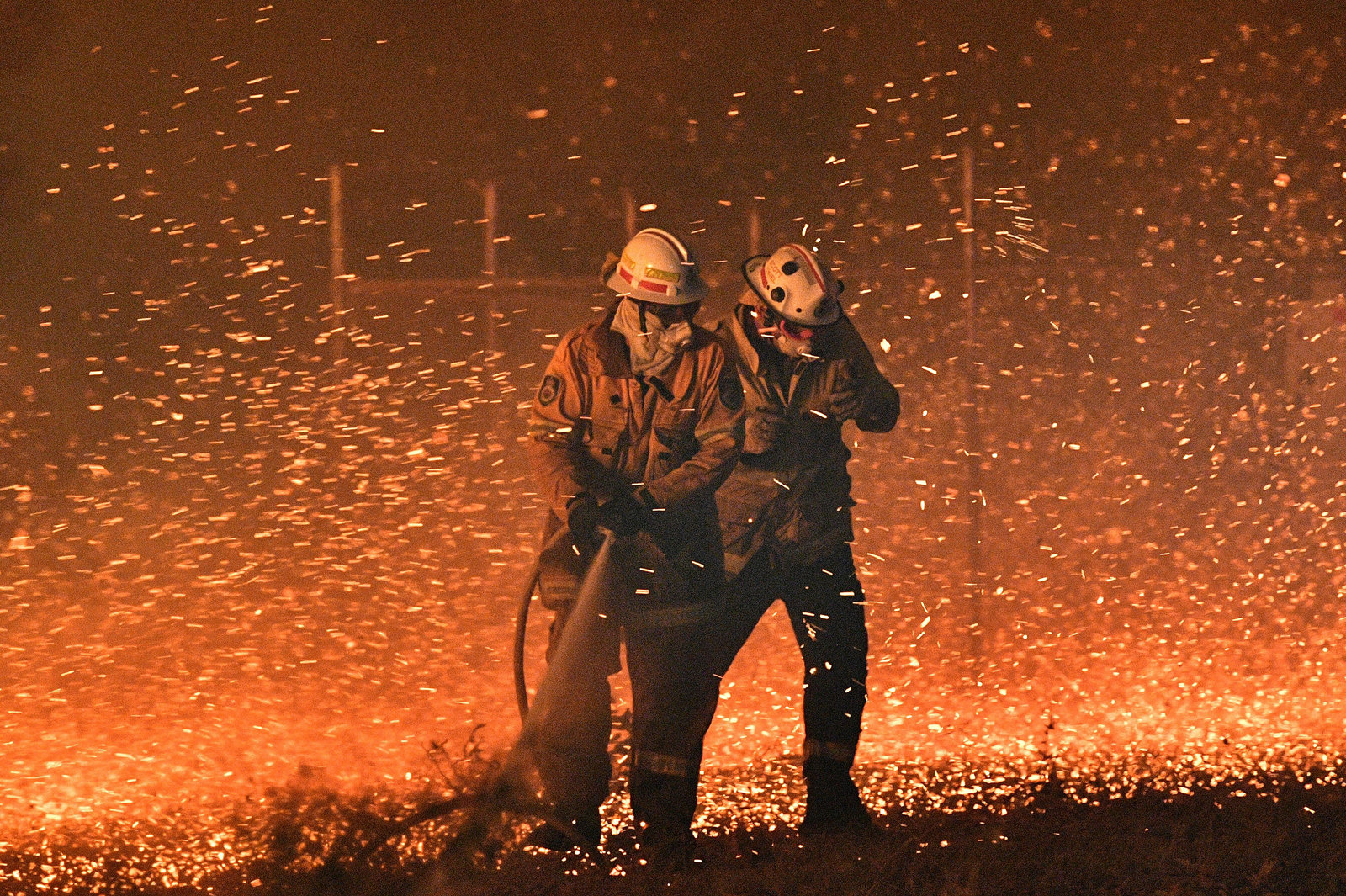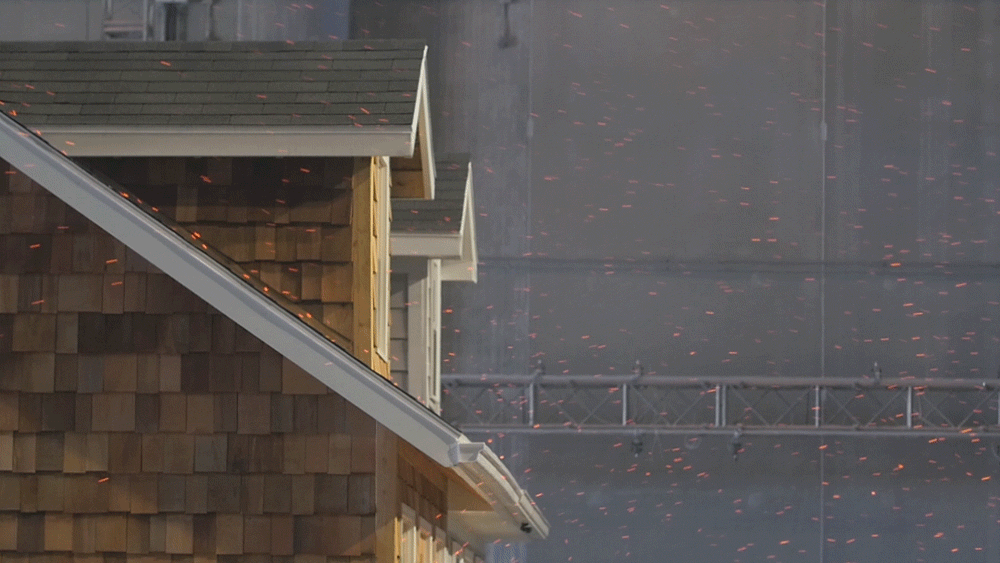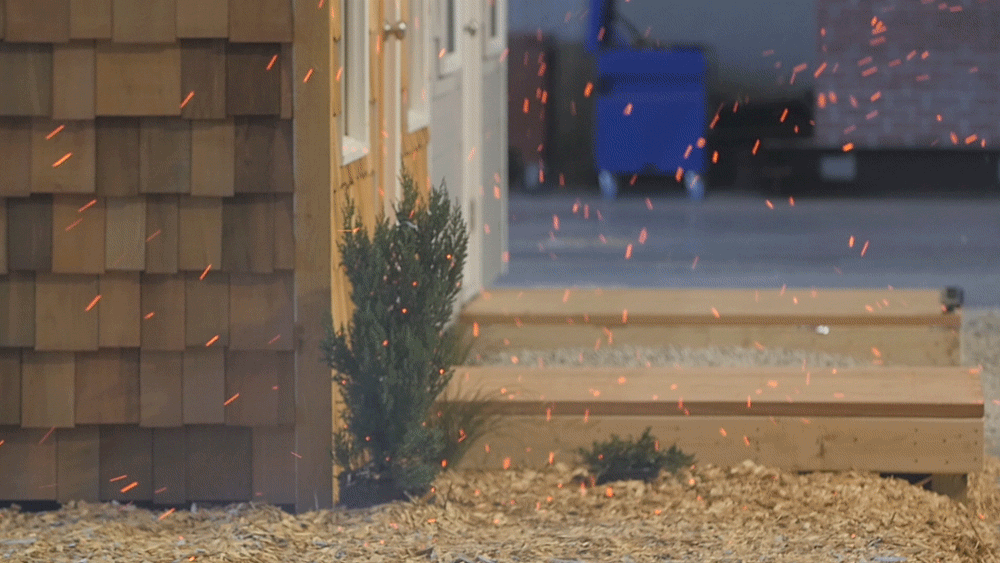澳大利亚的火灾引发了关于保护房屋不受火灾余烬影响的问题
澳大利亚的火灾引发了关于保护房屋不受火灾余烬影响的问题
Embers are raining down on communities across Australia.
余烬如雨点般落在澳大利亚各地的社区。
"The strong winds of a thunderstorm came through, but instead of raining water it was raining embers," one resident told The Sydney Morning Herald. Another described how, as he and his family tried to evacuate on New Year's Eve, "burning embers started falling and houses were starting to get lost."
一位居民告诉《悉尼先驱晨报》:“雷雨带来了强风,但并没有带来雨水,而是带来了余烬。”另一个人描述了他和他的家人在新年前夜试图撤离时,“燃烧的灰烬开始掉落,房屋开始被毁。”

More than two dozen people have died in wildfires that started burning in Australia in September. In recent weeks, fires on the east coast of the country have spread quickly with the help of hot-dry weather, burning through millions of acres and forcing thousands of residents to evacuate. Nearly 2.000 homes have been destroyed.
今年9月,澳大利亚发生森林大火,造成20多人死亡。最近几周,在干燥炎热的天气帮助下,该国东海岸的大火迅速蔓延,烧毁了数百万英亩土地,迫使数千居民疏散。近2000座房屋被毁。
And the airborne embers — not the flames — are largely to blame.
空中的余烬才是罪魁祸首,而非火焰。
"We've really started to isolate that it's not necessarily the wall of flames that's igniting homes," says Daniel Gorham, a research engineer with the Insurance Institute for Business and Home Safety in the United States. "Rather, the embers that are traveling ahead of the fire are igniting homes."
美国商业和家庭安全保险研究所的研究工程师丹尼尔·戈勒姆说:“我们已经开始意识到,不一定是燃烧的墙点燃了家庭。”“更确切地说,在火前面移动的余烬点燃了房屋。”

The bigger the fire, the farther it can disperse embers, and the larger and more dangerous those embers can be. As climate change exacerbates heat waves, droughts and poor land use decisions in Australia's arid regions, bushfires are getting larger and more intense — exactly the types of blazes that can fling embers for miles.
火势越大,余烬越容易扩散,余烬越大,越危险。随着气候变化加剧了热浪、干旱和澳大利亚干旱地区糟糕的土地使用决策,森林火灾正变得越来越大、越来越严重——正是这种类型的火灾可以燃烧数英里。
"A bigger fire is more powerful because the heat," explains Gorham. Big, hot fires like the ones currently burning on the east coast of Australia suck in massive amounts of air and burning debris at their base, and sends everything thousands of feet into the air in a giant plume.
“火越大,热量越大,”戈勒姆解释说。像目前在澳大利亚东海岸燃烧的大火,会吸入大量的空气和燃烧基地的碎片,并将所有东西抛向数千英尺高的空中并呈现出巨大的烟柱状。
Weather picks up the embers and the firebrands, lofts them up and casts them way outside the fire perimeter, threatening homes far from the center of the blaze.
天气会把余烬和火种挑起来,把它们抛到火灾外围,威胁着远离火灾中心的房屋。
A 2010 paper published by Australia's national research agency, the Commonwealth Scientific and Industrial Research Organisation, suggested that the vast majority of homes that burn during bushfires are ignited by embers.
澳大利亚国家研究机构联邦科学与工业研究组织2010年发表的一篇论文指出,在丛林大火中烧毁的绝大多数房屋都是由余烬点燃的。
Australia's national building standards are updated every decade on average. The most recent standards were adopted in May 2019.
澳大利亚的国家建筑标准平均每十年更新一次。最新的标准是在2019年5月采用的。

"One of the things we improved for 2019 was the size of gaps in the envelope of a building," explains Ian Weir, one of the authors of the standards, and a researcher at Queensland University of Technology who studies bushfire responsive architecture. Weir says Australian research makes clear that embers are an overwhelming threat to homes, but American research has been crucial for figuring our how to make houses more resilient to flaming debris.
该标准的作者之一、昆士兰科技大学研究丛林火灾响应式建筑的研究员伊恩·威尔解释说:“我们在2019年改进的地方之一是建筑围护结构的缝隙大小。”威尔说,澳大利亚的研究清楚地表明,灰烬对房屋是一种压倒性的威胁,但美国的研究对于弄清如何使房屋更能抵御燃烧的碎片至关重要。
Weir and his regulatory colleagues relied heavily on research conducted by the U.S. National Institute of Standards and Technology, which looked at how embers get lodged in gaps around doors, windows, roof vents and other architectural features.
威尔和他的同事们在很大程度上依赖于美国国家标准与技术研究所所做的研究,该研究所研究的是灰烬是如何在门窗、屋顶通风口和其他建筑特征的缝隙中沉积的。
"They've done some great research on exactly what is the dimension of the gaps at which we start to lose houses," Weir says, "and they've found that anything greater than 2 millimeters, we enable the embers sufficiently large to ignite wall cavities and furniture and so on."
威尔说:“他们已经做了一些伟大的研究,确切地研究了我们开始失去房屋的缝隙的尺寸。他们发现,任何大于2毫米的物体,我们都能使余烬大到足以点燃墙腔和家具等。”
The result is that many homes are dangerously flammable.
其结果是,许多家庭都是危险的可燃物。
- 频道推荐
- |
- 全站推荐
- 推荐下载
- 网站推荐


















